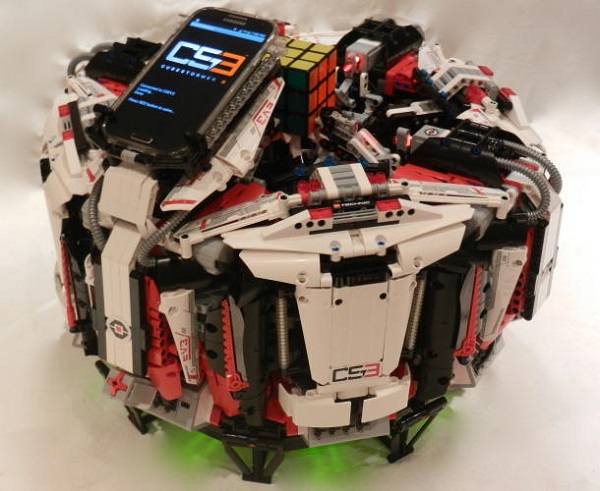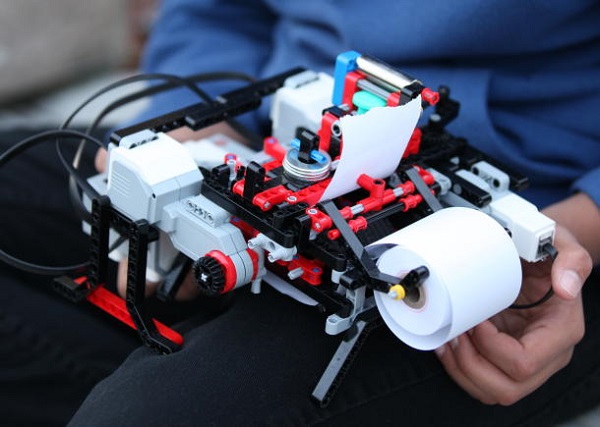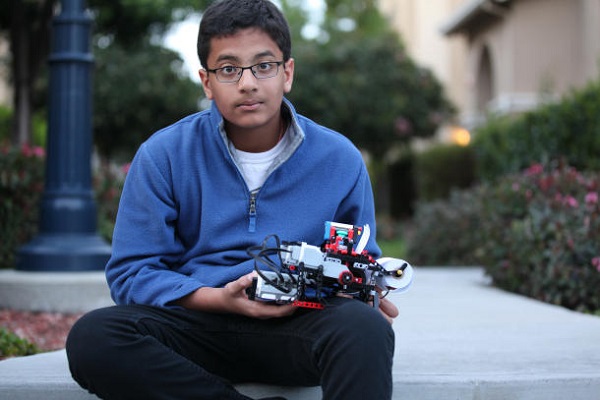
LEGO bricks and robots are only a few of a geek’s favorite things, so any projects bringing them together is bound to be successful, especially if involves breaking a world record.
CubeStormer 3, as this LEGO robot is known as, can solve Rubik’s cube in 3.253 seconds. Any way you look at it, that’s a great improvement over the previous record of 5.27 seconds. Ironically enough, that was established by the same team that built this robot using its predecessor, CubeStormer 2.
Inventors Mike Dobson and David Gilday exhibited their creation at the Big Bang Fair in Birmingham, England, and they also demonstrated how incredibly quick the LEGO Mindstorms robot is at solving Rubik’s cube. Gilday explained that “Our real focus is to demonstrate what can be achieved with readily available technology to inspire young minds into taking a greater interest in science, technology, engineering, and mathematics.”
By “readily available technology,” Gilday refers to the Samsung Galaxy S4 smartphone that provided the robot the brains necessary for breaking the world record. If the inventors are going down that path, I assume that the next world record will be established using a Samsung Galaxy S5. The two developers also used ARM-processors in tandem with the Galaxy S4. More precisely, the smartphone analyzed the cube using a custom Android app and determined how many moves the robot should make to solve the puzzle. The ARM processors, on the other hand, were in charge of moving the LEGO Mindstorms EV3 bricks according to the solution dictated by the Galaxy S4.
Gilday also pointed out that “We knew CubeStormer 3 had the potential to beat the existing record but with the robot performing physical operations quicker than the human eye can see there’s always an element of risk. Our big challenge now is working out if it’s possible to make it go even faster.”
Watch the following video to witness CubeStormer 3 solving the puzzle in record time. It’s quite needless to say that the video, despite being very short, is very impressive. The current record will be really hard to beat, even for this team of inventors, but that doesn’t meant that they shouldn’t use their creativity at something else, especially if it’s based on LEGO and robots, again.
Be social! Follow Walyou on Facebook and Twitter, and read more related stories about the LEGO robot that plays Tetris while planning to destroy humankind and the LEGO Nintendo 64 that turns into a fierce robot.

